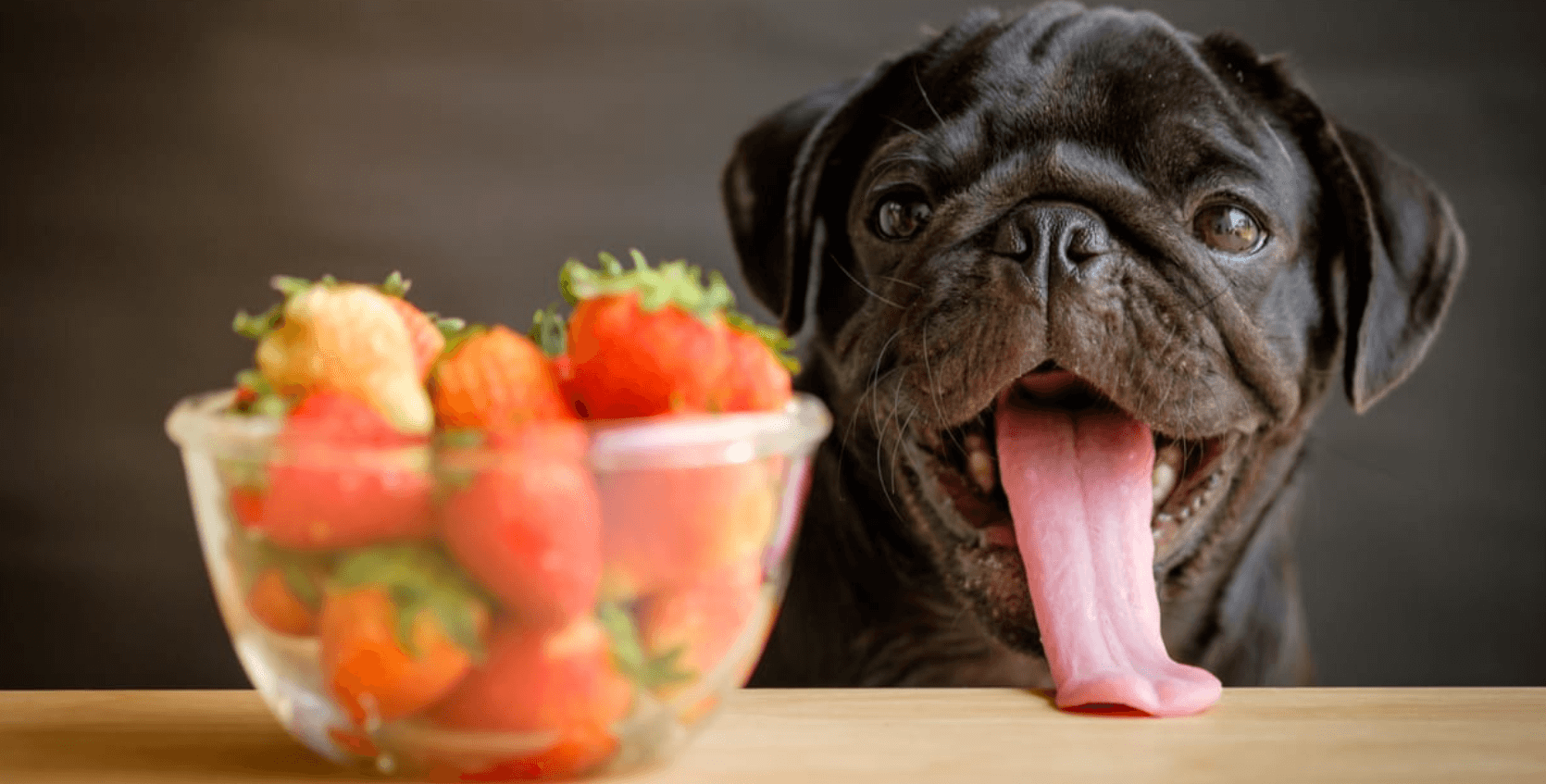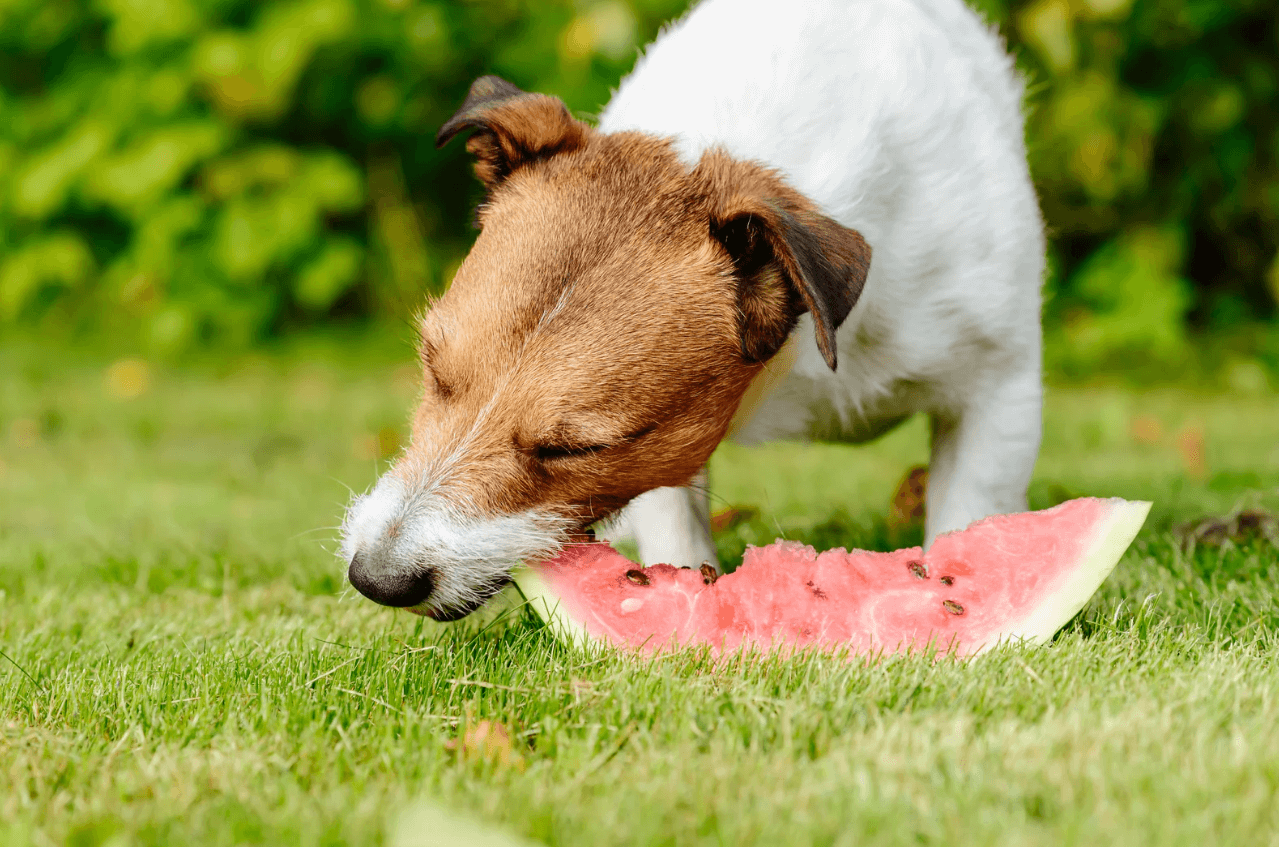As carnivores, dogs are fond of meat, bones and other animal products. That said, any owner has undoubtedly noticed that his companion is also attracted to other types of food, including fruits – especially sweet ones. It is therefore justified to wonder if it is possible or even advisable to give fruit to your dog, and if so, which ones and in what quantities. Here are the best fruits for dogs, the benefits they provide and the precautions to take.
The best fruits for dogs
You’ll come across many options when looking for fruits to feed your dog. Many of them are edible and even good for your health.
Here is a table with the best fruits for dogs that can be eaten without posing any risk:
| Apricot | Almond | Pineapple | Goji Berry |
| Banana | Cassis | Cherry | Chestnut |
| Clementine | Cranberries | Date | Fig |
| Strawberry | Passion fruit | Khaki | Kiwi |
| Litchi | Mandarin | Mango | Melon |
| blackberry | Blueberry | Nectarine | Hazelnut |
| Nut | Coconut | Olive | Watermelon |
| Fishing | Pear | Apple | Plum |
These fruits can be eaten fresh or integrated into various preparations: in fruit juice, smoothie, jam, … However, the quantities must then be adapted accordingly.
There are still many others you can feed your dog without posing any risk, especially if you turn to exotic fruits. However, these are the main ones.
Toxic fruits for the dog are not numerous – of the order of barely ten. The most dangerous is the grapefruit; others are currants, lemons, avocados, pomegranates… In any case, as soon as you know the list of problematic fruits and exclude them, you can avoid any serious problem.
The benefits of fruits for dogs
Fruits are quite beneficial for dogs, even though they are only a very small part of their regular diet.
They provide them with:
- glucose, which is a source of energy;
- fibers, ideal for facilitating ideal transit;
- vitamins: they are certainly capable of producing the vitamin C they need themselves, but this is not the case for all the others (A, B, etc.);
- minerals, such as calcium, phosphorus, and magnesium…;
- antioxidants, especially in the case of red fruits.
This explains why dogs – like their ancestors, wolves – consume small amounts occasionally, depending on their needs.
How much fruit should I give my dog?
It is not necessary to give a dog a large amount of fruit. Above all, it’s a carnivore: it must therefore feed mainly on meat and other animal products. Moreover, the kibbles already contain a significant amount of fiber and carbohydrates. Feeding your dog fruits is, therefore, not necessary.
If you still want to do it, you should limit the quantities and not exceed one or two portions per week, depending on its size: large dogs can eat a little more than small ones.
Of course, the quantities depend on the type of fruit in question: for example, watermelon is very low in sugar and therefore poses fewer problems than cherries or plums. As for dried fruits such as almonds, they are certainly less sweet than the others, but their lipid content means you should not give more than a few per week to your furry friend.
The risks of fruits for dogs
Fruits are generally good for dogs. However, they also pose certain health risks, so they should not be given haphazardly.
The main risks are due to sugar, fiber and, for some, the presence of a kernel.
The risks associated with sugar
If your canine furry friend likes fruits so much, it is because of the amount of sugar they contain. However, as in humans, too much sugar is bad for the dog, especially in the long term. Heavy and regular consumption increases the risk of being overweight and diabetes, both of which have serious repercussions on your dog’s health and reduce one’s life expectancy.
Even in the short term, a large amount of sugar is undesirable because it leads to digestive problems, as in humans. This would be due to the fact that glucose ferments in the digestive tract and impairs the digestion of fibers in the intestine. The main symptoms likely to appear are nausea, vomiting, bloating or even diarrhea.
Finally, regular sugar consumption increases the risk of cavities and other dental problems, especially if you do not give enough importance to brushing your dog’s teeth.
Therefore, if you want to give fruits to the latter, it is better to opt for those that are not very sweet or to limit the quantities strongly.
The risks associated with fibers
As is also the case with vegetables, many fruits contain a lot of fibre. Fibre facilitates digestion and limits the risk of constipation or even intestinal obstruction.
However, they are not well tolerated by dogs. They can digest a small amount, but large consumption risks irritating your dog’s digestive tract, causing diarrhea and bloating.
This is why, unlike humans, it is better to avoid a dog’s diet containing more than 5 to 10% fiber, except in exceptional cases. So that’s not a lot of fruit each day, especially if it already includes other foods with substantial amounts of fiber – which is usually the case with kibble.
The risks associated with kernels
Stones (peach, apricot, plum, etc.) are not without risk for canines.
First, they contain amygdalin, a substance which, when it comes into contact with water (for example, in the digestive tract), is transformed into cyanide, which is very toxic to your pup. Fortunately, it is locked inside the core: for it to be dangerous, the dog must break it with its teeth, which is not easy.
And even if it succeeded, the amount of amygdalin in a single nucleus is minor: for poisoning to occur, several tens or even hundreds would be needed. Despite everything, the risk cannot be completely ruled out, especially if other sources of cyanide are present in the animal’s environment and/or in its diet.
Another danger of a core for a dog – and not the least – is that it can get stuck in his trachea or digestive tract, causing choking or intestinal obstruction respectively. The risk is exceptionally high for small breeds, but no representative of the canine race is immune.
Therefore, if you decide to give fruits to your animal, it is better to get into the habit of systematically removing the pits.
